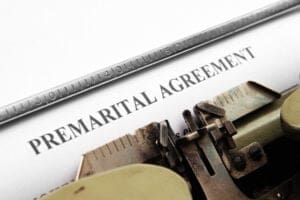How to Resolve a Property Boundary Dispute
Property owners facing neighboring conflicts frequently ask, “How can I effectively resolve a property boundary dispute without destroying relationships or draining my finances?” Unlike simple disagreements, boundary disputes involve complex legal frameworks requiring systematic approaches through documentation, professional surveys, alternative dispute resolution, and sometimes litigation. Modern property law provides multiple pathways for resolution while protecting constitutional property rights and encouraging peaceful settlements.
Property boundary disputes represent one of the most common real estate conflicts affecting American homeowners and businesses. These disputes arise from unclear deed descriptions, inaccurate surveys, natural boundary changes, or encroachment issues that threaten property rights. Understanding available resolution methods enables property owners to protect their interests while maintaining community relationships.
What Are the Most Common Causes of Property Boundary Disputes?
Survey discrepancies often trigger boundary disputes when different surveys produce conflicting results or when old surveys fail to meet modern accuracy standards. Property lines established decades ago may not align with current GPS technology and surveying methods. Changes in technology can reveal previously undetected errors in historical property descriptions.
Encroachment issues arise when structures, fences, driveways, or landscaping cross property lines without permission. These violations may result from honest mistakes during construction or deliberate attempts to claim additional land. Encroachments become more complex when they exist for extended periods, potentially creating adverse possession claims.
Deed interpretation problems occur when property descriptions contain ambiguous language, conflicting boundary markers, or mathematical errors. Older deeds may reference landmarks that no longer exist, making precise boundary determination challenging. Legal descriptions written before modern surveying techniques often lack the precision needed for contemporary property disputes.
Natural boundary changes through erosion, flooding, or geological shifts can alter property lines over time. Rivers, streams, and coastlines that serve as boundary markers may change course, creating uncertainty about current property limits. These natural changes require legal analysis to determine whether boundaries move with natural features or remain fixed.
How Do Professional Boundary Surveys Resolve Disputes?
Licensed land surveyors provide authoritative boundary determinations through systematic research, field measurements, and professional analysis. These professionals examine historical records, conduct field investigations, and apply state licensing standards to establish accurate property lines. Survey results carry significant legal weight in dispute resolution proceedings.
The survey process begins with extensive title research examining deeds, plats, court records, and previous surveys to understand the property’s legal history. Surveyors analyze boundary descriptions, resolve conflicts between documents, and identify potential discrepancies requiring field investigation.
Field work involves precise measurements using GPS technology, total stations, and other advanced equipment to locate existing boundary markers and establish accurate property corners. Surveyors search for original monuments, evaluate their reliability, and set new markers when necessary to clearly define property boundaries.
Survey documentation includes detailed plats showing property boundaries, existing structures, encroachments, and any discrepancies discovered during the investigation. These professional reports serve as evidence in negotiations, mediation, arbitration, or court proceedings while providing clear guidance for resolving boundary uncertainties.
What Role Does Documentation Play in Boundary Dispute Resolution?
Property deeds serve as the primary legal authority for boundary determination, containing metes and bounds descriptions, lot numbers, or other identification methods. Modern deeds typically provide more precise descriptions than historical documents, but all deed language requires careful interpretation to establish accurate boundaries.
Title insurance policies may provide coverage for boundary disputes and survey defects, offering financial protection and legal defense services. Policy coverage depends on specific terms and exceptions, making careful review essential when boundary issues arise.
Historical records including old surveys, subdivision plats, court documents, and aerial photographs help establish boundary evolution over time. These documents provide context for current disputes and may reveal relevant information about previous boundary agreements or modifications.
Photography and video documentation of disputed areas, encroachments, and boundary markers creates visual evidence supporting various positions. Drone photography can provide comprehensive overviews of property relationships while ground-level documentation captures specific details relevant to dispute resolution.
How Does Negotiation Provide Cost-Effective Resolution?
Direct communication between property owners often resolves boundary disputes without formal legal proceedings. Open dialogue about concerns, misunderstandings, and potential solutions can lead to mutually acceptable agreements that preserve neighborly relationships while addressing legitimate interests.
Boundary line agreements allow property owners to establish mutually agreed-upon boundaries that may differ from strict legal descriptions. These agreements require proper documentation and recording to bind future property owners. Legal counsel ensures agreements comply with state requirements and protect all parties’ interests.
Compromise solutions may include shared use arrangements, compensatory payments, or boundary adjustments that address both parties’ concerns. Creative resolutions often serve everyone’s interests better than rigid adherence to disputed legal descriptions.
Settlement documentation must comply with state recording requirements to bind future property owners and provide clear evidence of the resolved dispute. Proper legal drafting prevents future conflicts while protecting the settlement’s enforceability.
What Alternative Dispute Resolution Methods Apply to Boundary Conflicts?
Mediation involves neutral third parties facilitating discussions between disputing property owners to reach voluntary agreements. Mediators help identify common interests, explore creative solutions, and guide parties toward mutually acceptable resolutions without imposed decisions.
The mediation process typically costs less than litigation while providing flexible scheduling and confidential proceedings. Parties retain control over outcomes and can explore solutions unavailable through court proceedings. Successful mediation preserves relationships while achieving binding resolutions through settlement agreements.
Arbitration provides binding dispute resolution through neutral arbitrators who hear evidence and render final decisions. This process offers more formal procedures than mediation while remaining less expensive and time-consuming than court litigation.
Arbitration advantages include specialized expertise when arbitrators possess real estate or surveying backgrounds, flexible scheduling, and private proceedings. Binding arbitration awards receive court enforcement support while avoiding lengthy trial proceedings and public records.
When Do Boundary Disputes Require Court Intervention?
Quiet title actions provide judicial determination of property ownership and boundary locations when disputes cannot be resolved through alternative methods. These lawsuits join all interested parties and result in court orders establishing definitive property boundaries with binding effect on future owners.
The quiet title process requires comprehensive notice to all potential claimants, including adjacent property owners, mortgage holders, and anyone with recorded interests. Court jurisdiction depends on property location, and procedures vary among state court systems.
Injunctive relief may be necessary to prevent ongoing boundary violations, stop encroachment activities, or require removal of structures crossing property lines. Emergency injunctions provide immediate protection when continued violations threaten irreparable harm to property rights.
Damage claims may accompany boundary dispute litigation when encroachments affect property values, rental income, or development potential. Courts can award monetary compensation for losses caused by boundary violations while ordering corrective actions.
How Does Adverse Possession Affect Boundary Disputes?
Adverse possession laws allow individuals to acquire property rights through continuous, open, hostile, and exclusive occupation for statutory periods. These laws vary significantly among states but generally require possession periods ranging from five to twenty years depending on specific circumstances.
Requirements for adverse possession typically include actual occupation, exclusive control, open and notorious use, hostile possession without permission, and continuous occupation for the required statutory period. Some states require payment of property taxes or color of title to support adverse possession claims.
Boundary disputes involving long-term encroachments may trigger adverse possession analysis when structures or improvements have existed across property lines for statutory periods. Property owners must evaluate whether encroaching neighbors have satisfied adverse possession requirements in their jurisdiction.
Preventing adverse possession requires vigilant property monitoring, prompt action against encroachments, and clear documentation of property boundaries. Regular surveys, boundary maintenance, and swift response to violations help protect against adverse possession claims.
What Constitutional Property Rights Apply to Boundary Disputes?
Due process protections ensure fair treatment in boundary dispute proceedings, requiring proper notice, hearing opportunities, and impartial decision-makers. The Fourteenth Amendment prevents arbitrary government action affecting property rights while guaranteeing procedural safeguards in judicial proceedings.
Taking clause implications arise when government actions affect private property boundaries through road construction, utility installations, or regulatory changes. Property owners may be entitled to compensation when government activities effectively take private property for public use.
Equal protection principles prevent discriminatory treatment in boundary dispute resolution, ensuring similar cases receive consistent legal treatment regardless of property owner characteristics. Courts must apply boundary laws uniformly without favoritism or prejudice.
Contract clause protections preserve existing boundary agreements and property rights against subsequent legislative or regulatory interference. Vested property rights receive constitutional protection against retroactive changes that could affect established boundaries.
How Do State Law Variations Affect Dispute Resolution?
Recording systems differ among states in their notice requirements, priority rules, and procedural protections for property owners. Some states follow race-notice systems protecting first recorded interests, while others use notice systems protecting subsequent purchasers without actual knowledge of prior claims.
Statute of limitations periods vary significantly among jurisdictions for boundary dispute claims, adverse possession requirements, and other property-related causes of action. Understanding applicable limitation periods helps property owners protect their rights through timely action.
Professional licensing requirements for surveyors differ among states in their education, experience, and examination standards. Interstate practice limitations may affect surveyor selection when properties cross state boundaries or when specialized expertise is needed.
Court jurisdiction rules determine which courts handle boundary disputes, appeal procedures, and enforcement mechanisms. State court systems provide different procedural requirements, discovery rules, and trial procedures affecting dispute resolution strategies.
What Prevention Strategies Reduce Boundary Dispute Risk?
Regular boundary maintenance including monument preservation, fence maintenance, and vegetation management helps maintain clear property lines while preventing encroachment issues. Property owners should inspect boundaries periodically and address potential problems promptly.
Current surveys before major improvements, property purchases, or development projects provide accurate boundary information while identifying potential conflicts before they become disputes. Investment in professional surveys often prevents much larger costs associated with boundary litigation.
Clear communication with neighbors about property improvements, shared boundaries, and potential concerns helps prevent misunderstandings from escalating into formal disputes. Regular dialogue builds relationships that facilitate quick resolution when issues arise.
Documentation systems including survey records, maintenance logs, and correspondence files provide evidence supporting property rights and boundary positions. Organized record-keeping assists legal representation and supports various dispute resolution methods.
How Do Technology Advances Affect Boundary Dispute Resolution?
GPS technology provides unprecedented accuracy in boundary determination and surveying practices. Modern equipment can achieve precision within inches, far exceeding historical surveying capabilities and providing definitive evidence for dispute resolution.
Geographic Information Systems enable comprehensive property analysis, historical comparison, and visual presentation of boundary relationships. These tools help attorneys, surveyors, and property owners understand complex spatial relationships affecting boundary disputes.
Drone technology offers cost-effective aerial documentation, comprehensive property overviews, and detailed encroachment analysis. High-resolution imagery provides compelling evidence while reducing investigation costs compared to traditional surveying methods.
Digital documentation systems improve record storage, sharing, and analysis while providing secure access to relevant documents during dispute resolution proceedings. Cloud-based systems enable real-time collaboration among legal teams, surveyors, and property owners.
Property boundary disputes require systematic approaches combining legal knowledge, professional expertise, and strategic thinking to achieve fair resolutions. Understanding available options from negotiation through litigation enables property owners to make informed decisions about protecting their rights while considering costs, relationships, and practical outcomes.
The constitutional framework protecting property rights provides the foundation for all boundary dispute resolution methods. From direct negotiation through judicial determination, these various approaches serve the essential function of maintaining clear property ownership while providing fair procedures for resolving inevitable conflicts. Property owners who understand their options and act promptly when disputes arise position themselves for successful resolution while protecting valuable real estate investments and community relationships.
- Common Legal Strategies for Resolving Property Disputes
- Property Line Dispute: Solutions and Next Steps
- Legal Rights and Options in Property Boundary Disputes
- Tips for Resolving Property Line Disputes With Neighbors
- Boundary Dispute Resolution Guide for Homeowners
- Overview of Boundary Line Disputes and Legal Factors
- Top Five Common Property Boundary Disputes and Survey Solutions
- Adverse Possession: Impact on Boundary Disputes
- Role of Mediation and Arbitration in Real Estate Disputes
- Resolving Easement Disputes With Neighbors


















